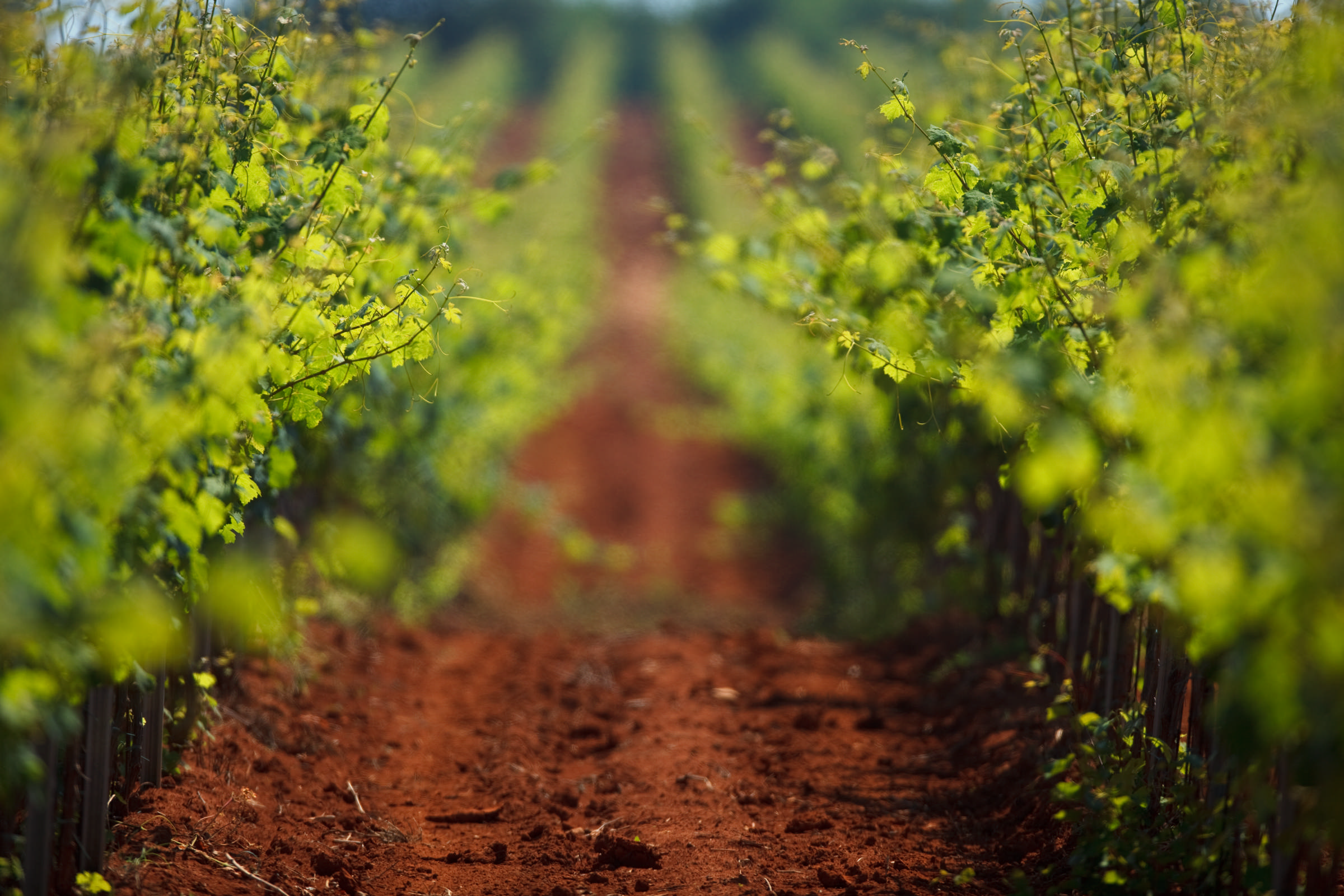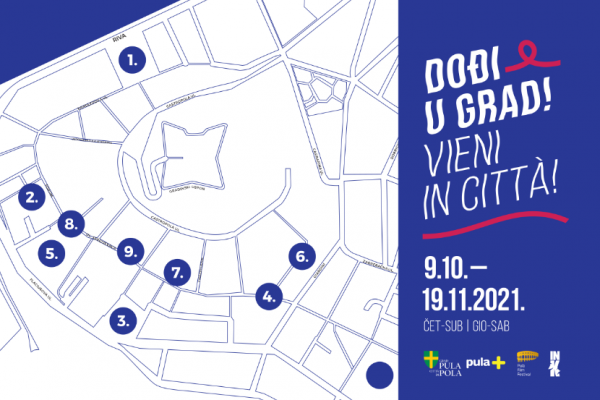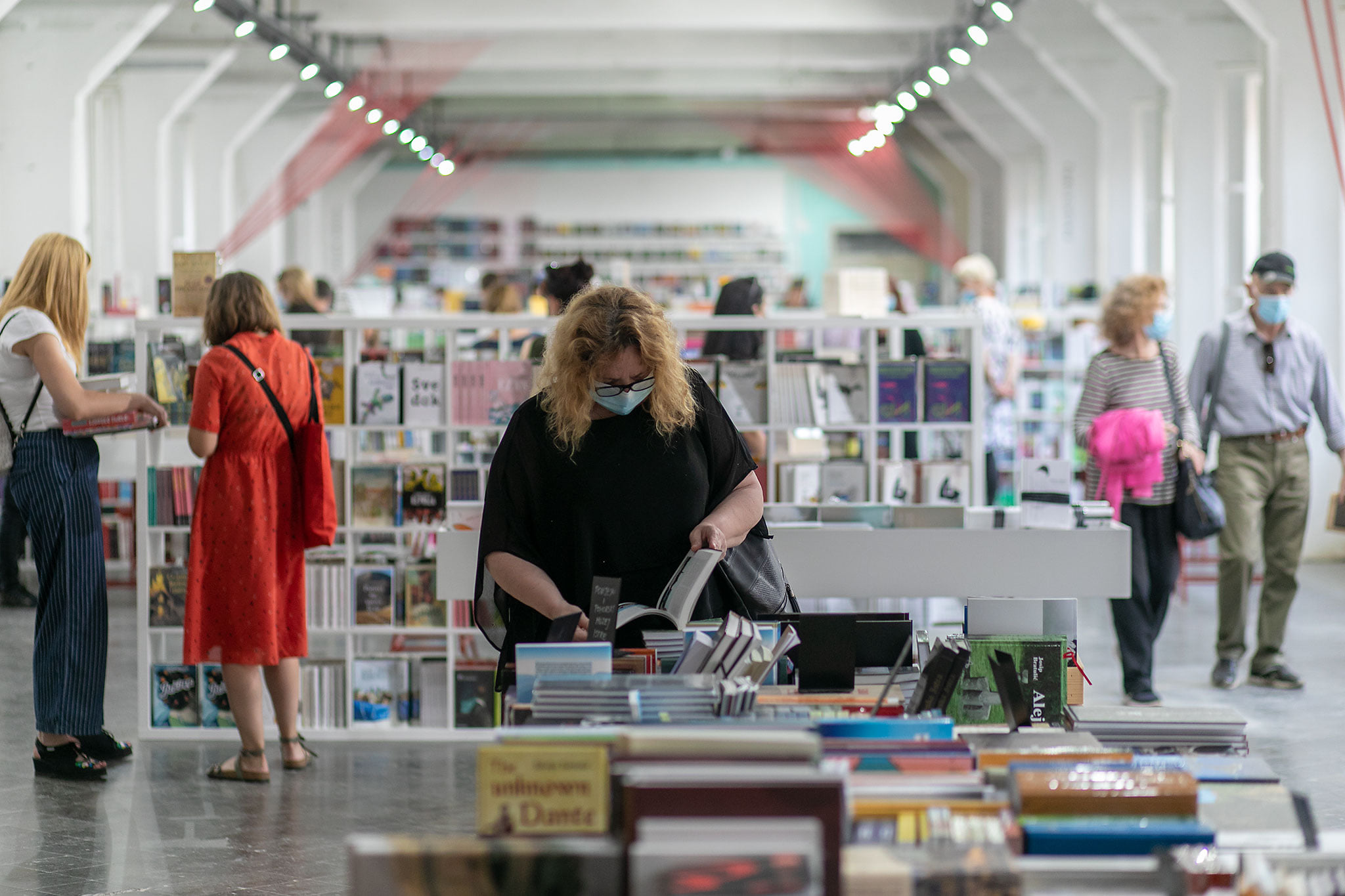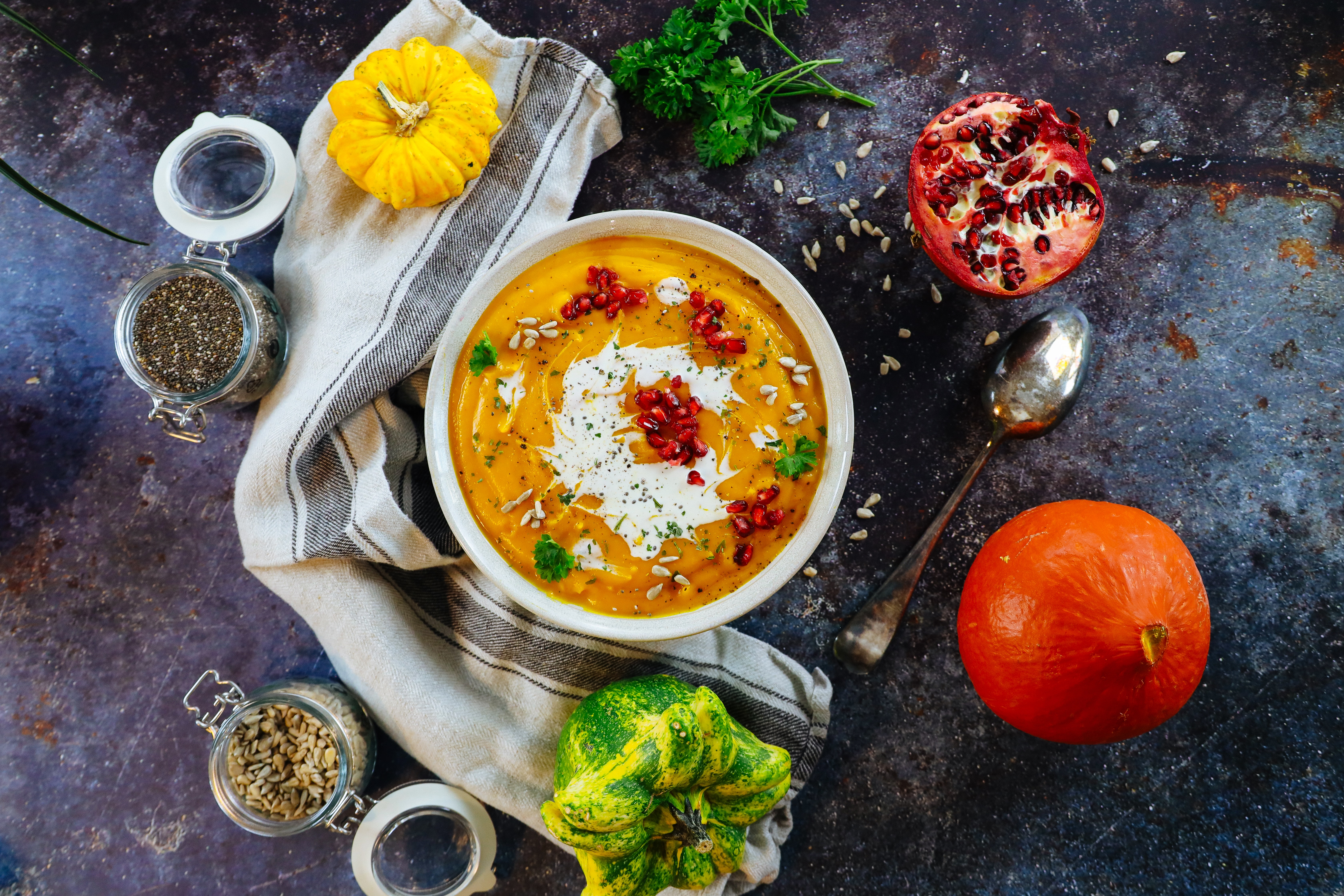5 Things To Do in Istria in November
Istria is alive and vibrant all year round, and there's no shortage of events outside of the tourist season. We bring you a few suggestions on what to see and do if you're planning to visit Istria in November
1. Warm up with a walk - and some wine - in Novigrad
Technically, it’s still October, but the forecast calls for a sunny weekend in Istria, and so... A nice long walk with gorgeous vistas, coupled with a few nibbles and glasses of wine - sounds like a great way to usher in the new month, right? The popular event Wine & Walk by the Sea will see its 4th instalment this Saturday in Novigrad.
The scenic 10km route will first take you through vineyards and olive groves, and then along the coast, providing a splendid view of the Novigrad city centre. Winemakers and restaurateurs from the area will be showcasing their specialties at six tasting stops along the way, plus a surprise stop halfway through.

© Romulic & Stojcic
Gourmet delicacies will be presented by local caterers Sergio, Kod Marice, La Taverna, Half 8 and Konoba Nino, with dessert provided by Ošo bakery. Each stop has a wine pairing, courtesy of winemakers Moreno Ivančić, Stancija Fava, Leonardo Palčić, Ghira, Vino P&P – Pervino, and Vina Demark.
The walk begins in the morning at Kastanija beach where participants can register and collect their tasting glass together with a map of the trail. Departures are scheduled every 20 minutes.
When: Saturday, October 30th. Registration 8.30 AM - 12PM
Where: Kastanija beach (start and finish), 3km north of Novigrad
Note: attendance is only possible with a Covid certificate or a negative rapid antigen test result no older than 48 hours. Tickets, pricing and the full schedule available at Colours of Istria.
2. Go out on the town in Pula

Image source: Dođi u grad - Vieni in città
Well... It's more like, Come to town!, but you sure can amp it up and paint the town red. Jokes aside, the city center in Pula is turning into a massive venue for a plethora of fun activities and events over the next few weekends. Live music, stand-up shows, food & wine, art, film screenings, sports, workshops and many other things await visitors from Thursday to Saturday each week in November.
When: Oct. 28-30, Nov. 4-6, 11-13, 18-19
Where: several locations in Pula, see map
You can find a detailed program for each weekend here (in English) and look out for individual events on Facebook.
3. Visit the Book Fair(y) in Pula
The book fairy’s coming to town for the second time in 2021! After the belated 2020 edition that took place earlier this year, the beloved literary event is returning to Pula for its regular annual instalment in the second half of November.
The Book Fair(y) in Pula traditionally features more than 300 publishers from Croatia and the region, and is visited by over 60,000 lovers of literature each year. The fair’s program is always built around a central theme, and this time around, it’s Love: during the ten-day event, panels and discussions will be questioning whether the timeless phenomenon still makes the world go round.

Image source: Sanjam knjige
This year, the book fair in Pula breaks its decades-long tradition by changing venues from the Austro-Hungarian palace of Marine-Kasino to the former textile factory Arena Trikotaža. Part of the program will also take place at The Shipyard Pub, located on the same street. Numerous Croatian and international writers will be attending the ten-day event, so make sure to check out the full program once it's released. If you're not up for panels and the like, you can simply enjoy strolling around the fair and buy a good book or two.
When: November 19th - 28th
Where: ex. Arena Trikotaža / The Shipyard Pub - St Theodor Passage 1, Pula
More info to be announced on the official website (in English) and Facebook page.
4. Explore the flavours of autumn in Brtonigla
Colder months call for hearty meals, and as the temperatures continue to drop, we could all use a nice bowl of pumpkin soup.

Image source: Ruth Georgiev / Unsplash
Luckily, with autumn in full swing, food markets in Istria are bursting with the best seasonal produce the region has to offer. Mushrooms, truffles, pumpkin, chestnuts, quince and pomegranate are on the menu in several restaurants participating in the Flavours of Autumn, a month-long gourmet event in Brtonigla.
Food & Wine Primizia and konobas Astarea, Morgan and Silvano prepared menus featuring delicious filling dishes inspired by the autumn season, paired with Istrian wines and olive oils, and available at promotional prices. Check out the menus here ... and don’t wait too long to book a table.
When: Oct 15 - Nov. 21
Where: Brtonigla
5. ...and keep exploring all flavours of Istria at the Open Days of Agritourism
You didn’t think this list would only have one gourmet item? We’re in Istria, after all - so even if you don’t get a chance to visit Brtonigla in November, culinary temptations await all over the region.
The Open Days of Agritourism will take place over four weekends in November, with twelve agricultural estates participating in the 11th annual instalment of the popular manifestation. Family-run farms will be offering menus based on their own produce and paired with other locally sourced delicacies. It's a truly authentic experience of traditional Istrian cuisine: grown, raised, harvested, prepared, cooked, baked and served by the hard-working hosts.
Most agricultural estates in Istria also offer accommodation, and there’s plenty to do for a weekend. Kids will enjoy meeting cute farm animals, there are various hiking and cycling trails for the whole family to explore, and after a long day out, there’s always a delicious full plate to get back to.
When: November 6-7, 13-14, 20-21, 27-28
Where: Agricultural estates Cerovac, Dušani, Giovanna Allegra, Montižel, Ograde, Pineta, Sia, Stara Štala, Štefanić, Ondina, Pod Čripnjom, Stancija Buršić
Booking in advance is recommended. More info available here (Croatian only, more details to follow).
Key Q - Quality Istrian Cuisine at Gortanov Brijeg, Pazin
As we previously reported, the Istrian cooking workshops are being held from October the 15th to November the 28th, with Chef Jeffrey Vela leading first, and this year for the first time, the youngest Michelin-starred chef, Danny Srdoč will be featured, as well as pastry chef Petra Jelenic, and Norwegians Daniel Rosvold and Robert Elias Rydland.
As Glas Istre/Mirjana Vermezovic Ivanovic writes on the 11th of October, 2019, the first in the cycle of culinary workshops starts at the Educational and Gastronomic Centre of Istria on Gortanov Brijeg on Tuesday, October the 15th, for which more than 150 participants have applied so far, and more are still expected since the applications are open until the end cycle on November the 28th.
The workshops are organised by the Agency for Rural Development of Istria (AZRRI), with the assistance of IZ, OKIŽ and the County Chamber of Commerce.
The first will be led by Chef Jeffrey Vela, known in the world of gastronomy and culinary art as a ''food designer'' who uses local foods to create innovative and interesting dishes. The workshops were announced at yesterday's press conference by AZRRI Director Igor Merlić, President of the Chamber of Trades of Istria (OKIŽ) Robert Momić, his deputy Andi Vitasović, Secretary Eros Sorić and Edmondo Šuran, Head of the Centre for Rural Entrepreneurship Development at AZRRI.
The workshops have been united under the name Key Q - the key to the quality of Istrian gastronomy, and they've been attended by about one thousand chefs over the last four years. Merlić recalled that they are now running for the fifth year in cooperation with Istria County and OKIŽ, and the intention is to bring indigenous Istrian cuisine, as well as its more modern version, closer to the hotel and catering sector, as well as to restaurateurs and regular citizens.
In this way, the aim is to encourage the development of indigenous products, as well as local breeds, such as Istrian Boškarin (type of cattle), which was once sadly on the verge of extinction. It also wants to preserve the Istrian donkey, the sheep, and also the goat, which is also only just hanging onto survival.
''We're the only example of good practice in Croatia. The emphasis is placed on the valorisation of the local products, thus opening up the possibility for farmers to live off their labour. The workshops are filling up well, and if there's a lot of interest, we will repeat them,'' Šuran said.
He announced some new names among workshop leaders: in addition to Vela, there will be the youngest Michelin-starred chef, Deni Srdoč, from the Draga di Lovrana Restaurant, who will hold a workshop on October the 29th.
For the first time on November the 14th, Petra Jelenić, the owner of Mak na konac in Zagreb, will present her creative desserts. There will also be two Norwegian chefs present, Daniel Rosvold and Robert Elias Rydland, who will show how to bring Norwegian culinary ideas into the preparation of Adriatic fish and meat of Istrian cattle on October the 21st.
Among the presenters is Robert Perić, who will take a look at Istrian mozzarella in modern gastronomy on October the 17th, and will present six innovative desserts of Istrian curd on October the 24th. On November the 21st, he will talk about Istrian red garlic as a new brand and its multiple uses in both traditional and modern cuisine.
David Skoko will show participants how to prepare blue fish. Fabrizio Vežnaver from the Pergola restaurant and sommelier Filip Savić will be introduced on November the 11th. Interestingly, according to Šuran, the best-selling dish in Istria is - pizza. That is why a workshop will be held on November the 27th to the 28th, where pizza from Naples will be shown.
''Research shows that adventure and gastronomy are the third motive for guests to come to Istria. Guests want to try local, indigenous Istrian cuisine, which we're proud of, and that's reason enough for these workshops. We aspire to become a bio region, side by side with gastronomic regions like Tuscany and the Basque Country,'' said Merlić.
Make sure to follow our dedicated lifestyle page for much more.
Foreign Chefs Attend Autumn Culinary Workshops in Istria
As Glas Istre/Andjelo Dagostin writes on the 30th of September, 2019, the tourists Istria wants to attract typically want to eat locally, authentically, they want the experience and not just the food, because they can get international food everywhere in the world.
Although the Educational Gastronomic Centre of Istria, located near Pazin, has so far been less widely known, the fact remains that their numerous cooking workshops (115 of them) have been attended by more than 1,200 students over the past four years, mainly by local chefs from Istria, as well as hospitality workers and hoteliers.
Glas Istre sat down and talked to Edmond Šuran, head of the Centre for Rural Entrepreneurship Development, who had a lot to say.
Everything starts from the point of agriculture and the task of our agency was to put a spring back in the step of Istria's agriculture workers. We used this to use gastronomy as a superior tool for the additional valorisation of local products, because from the experience we had with Istrian cattle, the biggest shift happened when the meat ended up in the hands of the chef.
At the first moment, it was mostly agritourism and taverns, and very soon after, restaurants and hotels with 4 or 5 stars, and now these are already Michelin-starred restaurants that want to have Boškarin (type of cattle) on offer, which is great.
All of this was created at AZRRI, and through gastronomy it was then placed on the market. That was a trend at the time, but today, that's almost a type of gastronomic brand, says Šuran, adding that 80 to 90 hospitality establishments currently offer Istrian beef, and restaurants in Primorje, Zagreb, Slovenia and even across the Adriatic in Italy also offer it. They want to achieve the same with the meat of the Istrian donkey, which is currently being offered in a dozen restaurants across Istria.
''At the moment, the demand for Istrian donkey meat is growing, and quite quickly, even those who raise it aren't managing to meet the needs of the market,'' continued Šuran, adding that the goal is to achieve such an impressive level of valorisation with other Istrian products, including media promotion.
At AZRRI, they listen to the needs of Istria's chefs and others, but also the mentor-lecturers who are constantly interacting with the chefs. Due to the relative limitations of the top culinary staff in the peninsula, AZRRI has not limited itself solely to Istria, so they invite excellent chefs with new ideas from all over Croatia and even from abroad. The cooking workshops are attended by established chefs with experience who are looking for inspiration, but also younger chefs with whom much work is being done to accelerate culinary techniques.
''We must not forget that in the best restaurants, the dish is presented not only by the waiter, but very often by the chef, precisely because he's familiar with the primary food, whether it's boar meat, blue fish or mozzarella, so the chef gives that dish its contents, its value, and he can tell the guest the story of the meal and he appreciates what goes into it,'' explained Šuran, adding that not all those on Istria's hospitality scene are expected to position themselves in high gastronomy, but those who do want that will have to interact with the guest.
''We're especially pleased that many young chefs and caterers are implementing the knowledge they've acquired here, using new details and culinary tricks. We see this when we go around the field,'' said Šuran, adding that after four years, it's difficult to maintain the level of innovation in the cooking workshops, but he believes that they still succeed in inviting new chefs every year. So, they are still attracting students who mostly come from Istria, then from many other parts of Croatia, but also from Italy, Slovenia and from down south in Montenegro.
''These chefs also come back to attend new workshops every year, The majority of attendees come from the private hospitality sector, but over the last two years, hoteliers from Istria have also become active, often booking the entire workshop for their employees.
I know that it may be a little harder for hotel companies to implement the knowledge they acquire here, because they have certain business templates and integrated public procurement, but it's commendable that these chefs still do come and acquire new knowledge, experience, and skills here that can then influence managers to adopt at least a bit of it. And that does happen!'' he noted.
He cited the fact that the largest amount of Istrian cattle meat was consumed in one restaurant within a hotel house in Istria, as an example of influence. However, when the head chef left that restaurant, larger quantities of meat were no longer ordered there, but they were then made available in restaurant where that chef had moved.
Make sure to follow our dedicated lifestyle page for much more.
The Holy Trinity of Istrian Wine: Refošk
November 29, 2018 - The third and last in a series of articles unveiling the most important Istrian wines.
Choosing the third most iconic Istrian wine was a bit tricky. There is the famous Muškat which can be found in several different styles, though in Istria it is traditionally produced as a dessert wine, and comes as a close second right after Malvazija. When it comes to red wines, the Bordeaux varieties like Merlot, Cabernet Sauvignon, Cabernet Franc, and Petit Verdot show remarkable results in Istrian terroir and so their production is on the rise. In fact, Merlot is today probably more prevalent than Teran.
However, since we're talking about the Istrian "holy trinity," choosing any other variety than Refošk would be a sacrilege. This rich red enjoys the reputation of being the enfant terrible of Istrian wines, and because of its strong, tannic flavor, you either love it or hate it.
Although it was long mistakenly considered that Refošk is merely another name for Teran, and even that they are "first cousins," an extensive DNA analysis and comparison of these two varieties determined that they are actually two separate cultivars, despite their numerous genetical similarities.
According to a renowned Italian professor Antonio Calò and several other wine experts, Refošk is indigenous to northern parts of Italy, namely the Friuli-Venezia Giulia region, and in particular the Karst plateau which stretches across the Italian border to both southwestern Slovenia and northwestern Istria.
Refošk is dark ruby to violet in color; it has a pronounced fruity flavor with a slightly bitter aftertaste and exudes a rich aroma reminiscent of cherries and black currants with a touch of black pepper and vanilla from the wooden barrels. It is best paired with cured meats, especially Istrian game sausages, but also grilled red meat, and traditional dishes like boškarin žgvacet with gnocchi.
In Istria, this powerful, full-bodied red is most often used in various blends while Refošk varietal is a rare gem made only with superb vintages, and very few winemakers have managed to tame its wild nature.
For more related content, make sure you follow Total Croatia Wine.
The Holy Trinity of Istrian Wine: Teran
November 26, 2018 - The first in a series of three articles unveiling the most important Istrian wines.
Istrian wine number one and at the same time one of the key domestic red varieties, Teran holds a special place in Croatian winemaking history. It was supposedly first mentioned in the 13th century, and by the 1880s it was the most widespread grape variety in Istria, planted on 90% of all vineyards.
The wine's strong character is said to be evident while the grapes are still on the vines, as Teran grows in large clusters of densely packed berries with highly resistant skins. Teran achieves its best quality in Istrian inland but also on northwestern Istria's red soils which are blended with calcareous stone, and thus makes the perfect setting for the fertile growth of this red grape variety that seems to absorb the mineral, iron-like quality of these soils in its grapes.
Teran has an intense, deep ruby red color with a distinctive purple hue, and you will often hear Istrians say that it is the color of hare's blood. Depending on vintage and terroir, Teran can make earthy, full-bodied robust red wines, both as a varietal and in various blends, but contrary to conventional thought, you can also find Teran that is lighter, more fresh and fruity in character, exuding a distinctively bold aroma of wild berries.
The Istrian giant among wines, Teran has come a long way from the wine of Istrian farm workers and domestic households. It is best at a temperature of about 18-20 °C and traditionally paired with the fragrant Istrian truffles, game and different red meat dishes, but also prosciutto and aged cheeses.
In wintertime, as an old Istrian custom, Teran is traditionally enjoyed as a warm beverage called Istarska supa: the lukewarm wine flavored with sugar, black pepper, and olive oil is served in a clay or ceramic jug, sided with grilled sourdough bread which is to be soaked in it.
For more related articles, make sure you follow our designated gourmet page.


